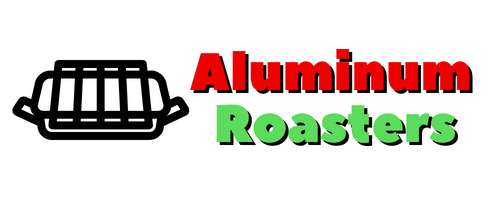When it comes to roasting your favorite meats and vegetables, you have a few different options when it comes to the type of roaster you use.
Some people prefer stainless steel, while others swear by cast iron or glass.
But there’s one type of roaster that often gets overlooked: aluminum.
In this article, we’ll explore the benefits of using an aluminum roaster and why it may be the best choice for your home cooking needs.
Definition of a Roaster
First, let’s define what a roaster is.
Simply put, a roaster is a large cooking pan that is designed for oven use.
It is typically deeper and wider than a standard baking dish, and it is often used to roast meats and vegetables at high temperatures.
There are a few different types of roasters on the market, each with its own unique set of characteristics.
Why should I use an Aluminum Roaster Instead of a Different Type of Roaster?
There are several reasons why aluminum roasters may be a better choice than other types of roasters:
- Even heat conductivity: Aluminum roasters conduct heat evenly, which can lead to more consistent cooking results.
- Lightweight and easy to handle: Aluminum roasters are generally lightweight and easy to maneuver, making them convenient for home cooks.
- Durability: Aluminum roasters are resistant to rust, corrosion, and scratches, making them a long-lasting choice.
- Other roaster types have drawbacks: Stainless steel roasters may not conduct heat as evenly, cast iron roasters can be heavy and difficult to handle, and glass roasters are fragile and prone to breaking.
Overall, aluminum roasters offer a good balance of performance and durability, making them a top choice for home cooks.
Recommended: Heavy Duty Aluminum Roaster Pan With Handles: Ultimate Guide
Benefits of Using an Aluminum Roaster
One of the primary benefits of using an aluminum roaster is that it conducts heat evenly, ensuring consistent cooking results.
This is especially important when roasting meats, as you want to ensure that the inside is cooked to the desired level of doneness while the outside is nicely browned and caramelized.
Aluminum roasters are also lightweight and easy to handle, making them a convenient choice for home cooks.
Other Types of Roasters and Their Drawbacks
Of course, aluminum roasters aren’t the only option available.
Some people prefer the look and feel of stainless steel roasters, while others are fans of the durability and heat retention capabilities of cast iron.
However, these types of roasters do have their drawbacks.
Stainless steel roasters may not conduct heat as evenly as aluminum, leading to inconsistent cooking results.
Cast iron roasters, while extremely durable, can be quite heavy and difficult to maneuver.
Glass roasters, while attractive, are fragile and can break easily if they are not handled with care.
Also Read: How to Season an Aluminum Roaster: (Explained!)
Using a Roasting Rack in an Aluminum Roaster
Using a roasting rack in an aluminum roaster can be a great way to elevate your meats and vegetables off the bottom of the pan during cooking.
This helps to ensure even cooking and can also make it easier to remove the finished product from the roaster.
Roasting racks are typically made of metal and have a raised, grid-like design that allows hot air to circulate around the food.
When using a roasting rack, be sure to place it in the roaster before adding the food to avoid any spills or mess.
Roasting racks are a useful tool for anyone looking to achieve perfectly cooked and evenly browned meats and vegetables in their aluminum roaster.
NOTE: You can check out the top-rated roasting racks on Amazon here
Conclusion
In conclusion, if you’re in the market for a new roaster, we highly recommend giving aluminum a try. It offers the best balance of performance and durability, making it the ideal choice for home cooks.
Recommended: How Do I Prevent My Aluminum Roaster From Rusting?

